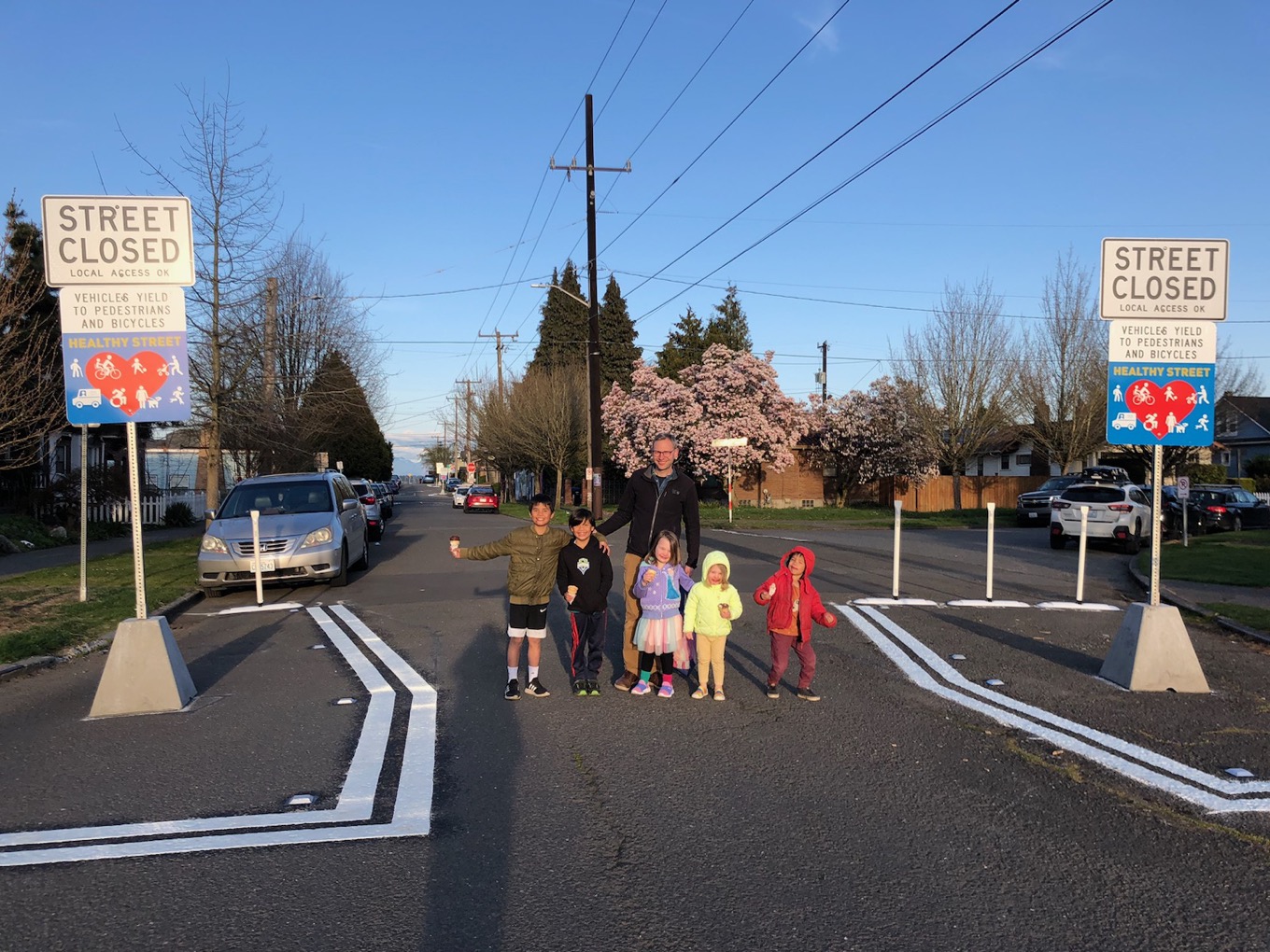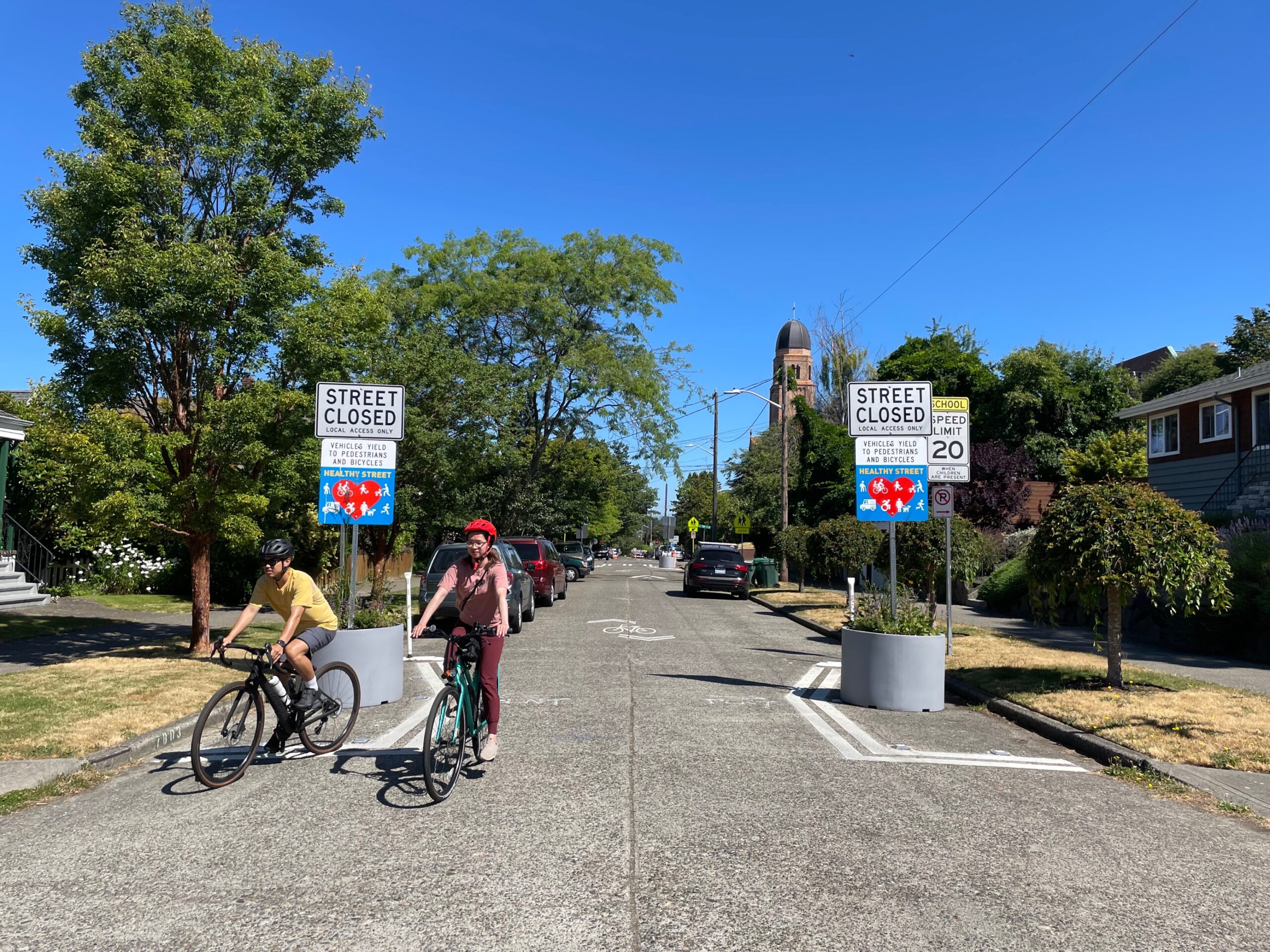
During stay-at-home orders at the outset of the COVID-19 pandemic, people had limited safe options to recreate, exercise, and socialize. This was especially true for those with limited access to private and public outdoor space.
In response, the Seattle Department of Transportation (SDOT) upgraded over 25 miles of Neighborhood Greenways to Healthy Streets in the spring and summer of 2020 to provide more public space for people to safely exercise and gather. Across Seattle, the Healthy Streets implemented during 2020 saw a 193% increase in the number of people walking and biking per day when compared to streets that were improved with a standard Neighborhood Greenway. Vehicle volumes and speeds went down, creating a safer and more comfortable place for people to walk, roll, jog, and bike.
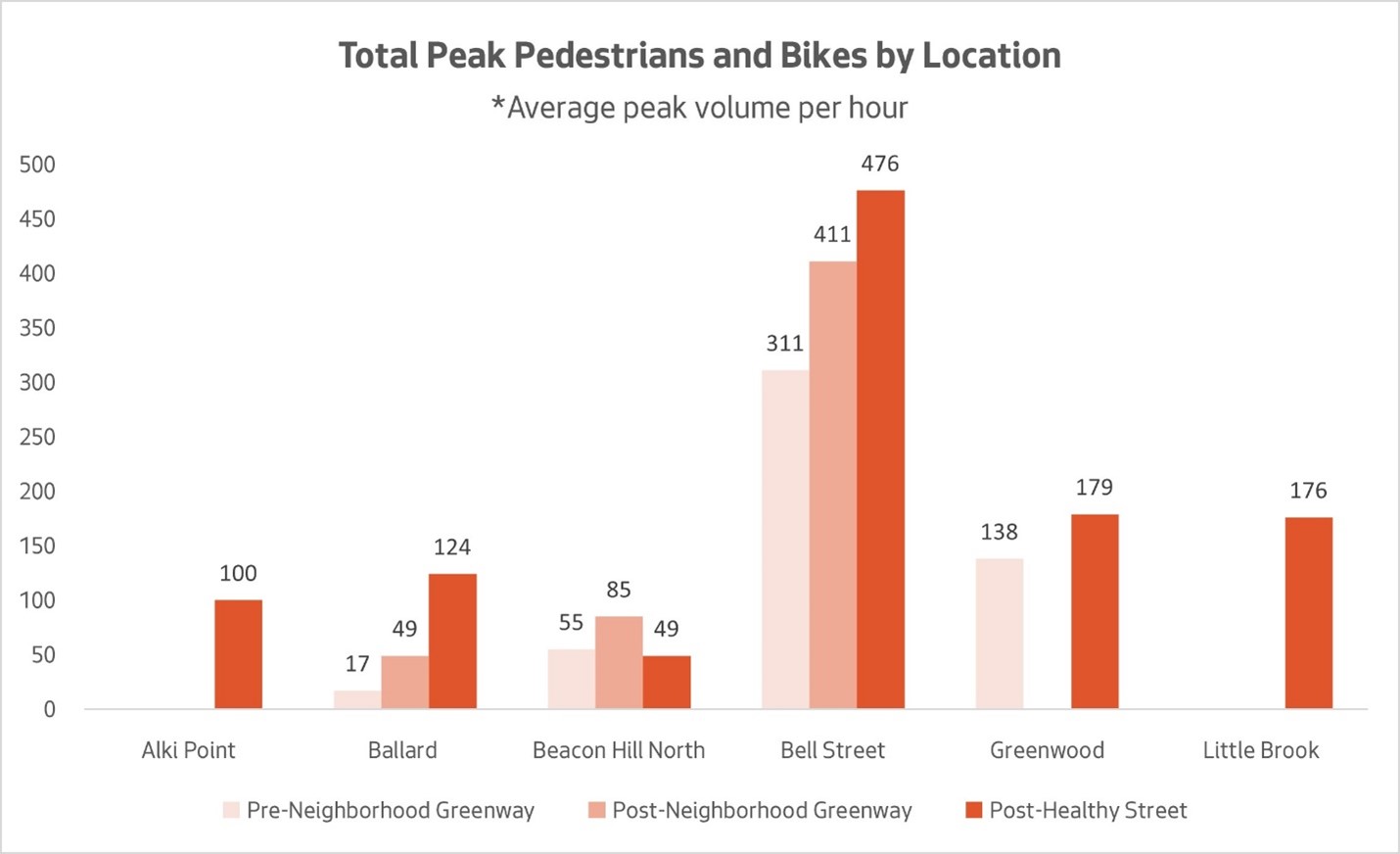
SDOT used a data-driven approach to evaluate each Healthy Street location to better understand whether the location is a good fit for permanent upgrades. Starting in 2020, SDOT talked to people and distributed surveys to understand how Healthy Streets were working, and what people would prefer for Healthy Streets in their neighborhood moving forward. They observed and reviewed each Healthy Street with this input in mind to help inform decision-making.
During initial outreach, SDOT heard concerns from BIPOC (Black, Indigenous, and People of Color) communities regarding how enforcement of the streets would be handled, maintaining established cultural practices, and reports of racism directed toward BIPOC people traveling the routes. This led to neighborhood-focused outreach and partnerships with community-based organizations.
As of January 2024, 14 locations have been selected for permanent upgrades. SDOT will complete evaluations for the six remaining temporary Healthy Streets this year.
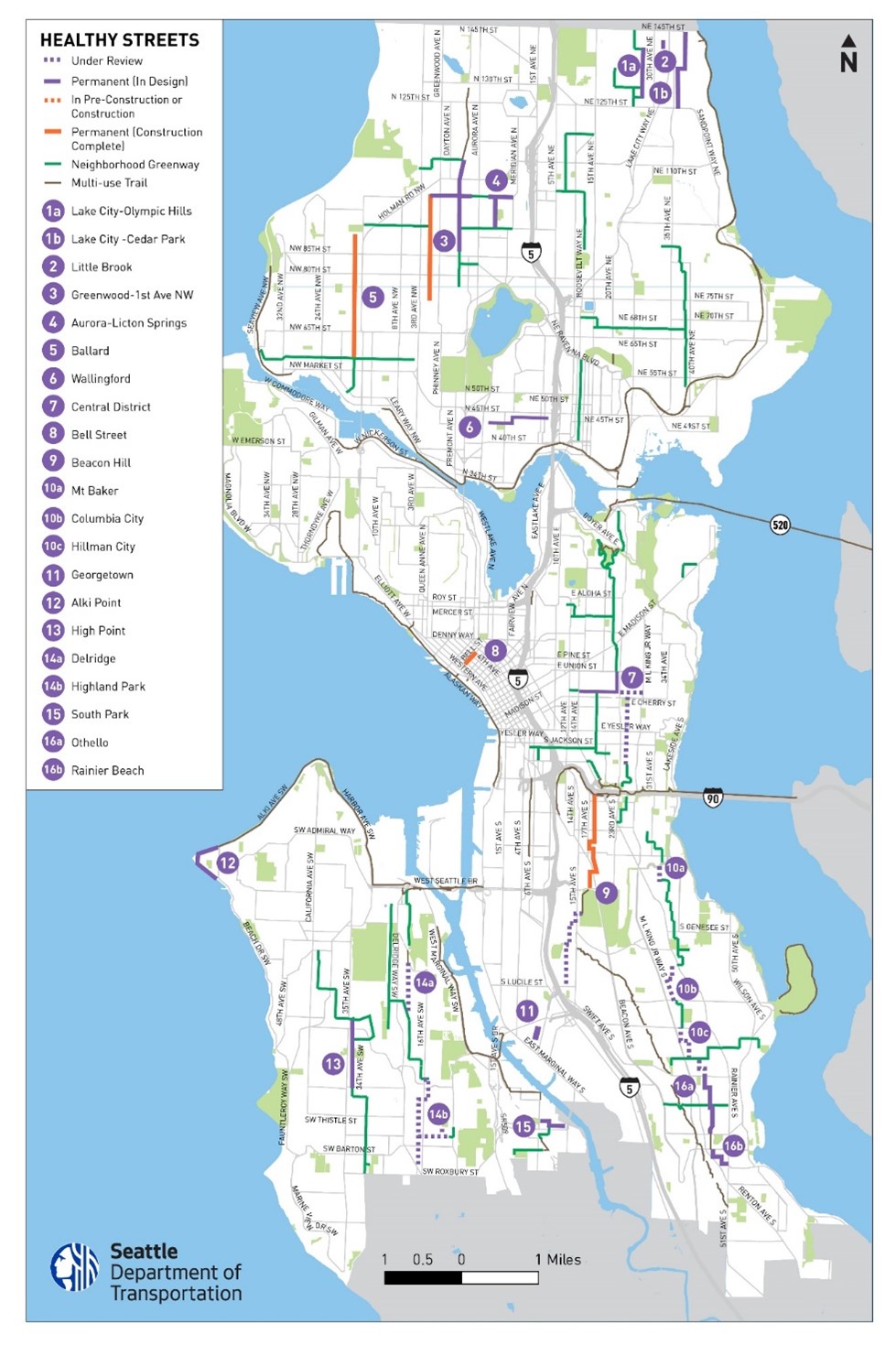
Community leads the way for Healthy Street in Little Brook
The Little Brook Healthy Street location was requested by neighbors and installed in April 2021. With the community organization Lake City Collective taking the lead, many neighbors enjoyed the extra space with activities like basketball, gardening, wellness classes, and movie nights.
SDOT asked neighbors how the Little Brook Healthy Street was working for them and what they thought of making it permanent. They collected 141 surveys (99 in English, 40 in Spanish, and 2 in Amharic) with 81% in favor of making the Healthy Street space permanent.
“It helps so people aren’t driving fast down these streets. It’s helping the community to get to know one another.”
-Response from Little Brook Healthy Street surveys
“I like having the street open to basketball and that small section being pedestrian only. We live on this very block and like the feeling of feeling safe when we step out of our home. However, the blocked area is causing traffic jams and a bit of road rage during peak driving hours. There are just too many cars that require easier and access to their buildings…I love the idea, but it needs modification.”
-Response from Little Brook Healthy Street surveys
Using this feedback, SDOT made upgrades to the Healthy Street plaza and is working on the development of an updated park and pedestrian plaza. This project will complete the redevelopment of Little Brook Park, beginning with the design developed by community members and led by Lake City Collective.
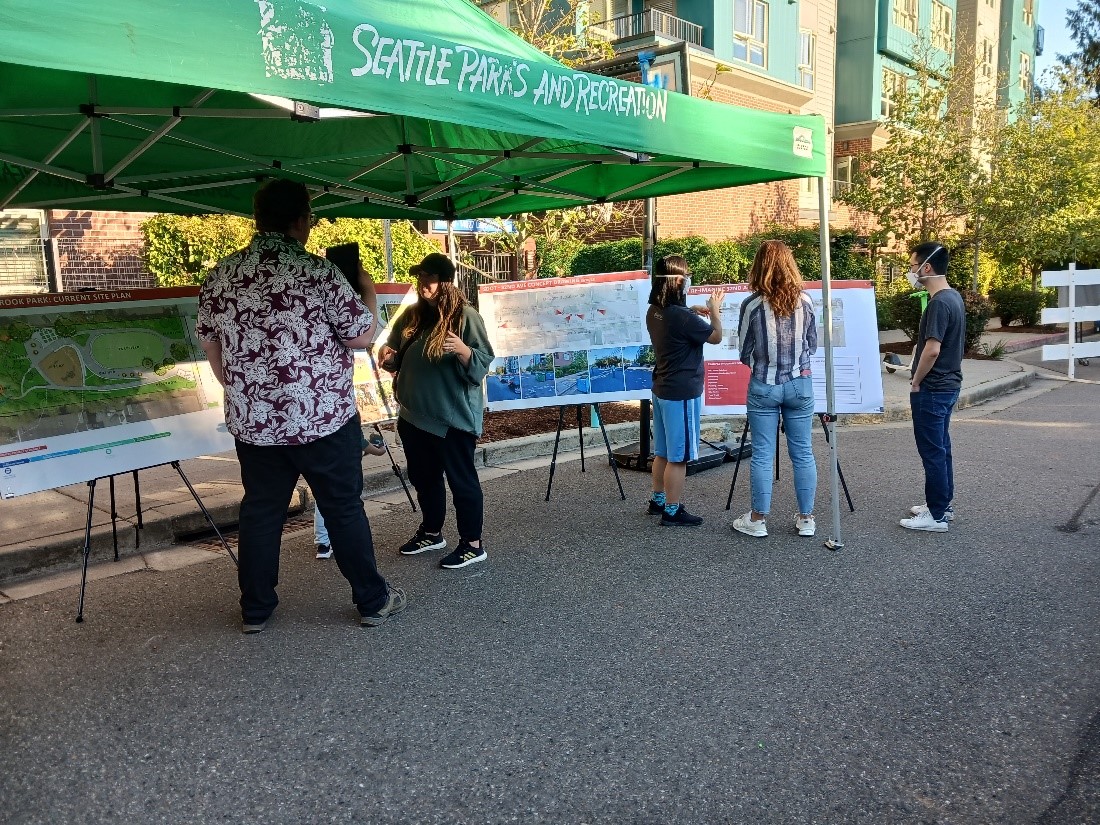
Beacon Hill Healthy Street paves the way for safety improvements
Piloting Healthy Streets was an opportunity to assess community needs and potential improvements across Seattle neighborhoods. The Beacon Hill Healthy Street locations are an example of this one-size-does-not-fit-all approach. Based on observations, data, and neighbors’ feedback, the north portion of the Healthy Street was made permanent in 2023. The south portion of the route is still under review, with additional community outreach conducted in 2023 and continuing in 2024.
As part of the new Healthy Street infrastructure, a major intersection in the neighborhood is receiving significant safety improvements. Construction is currently underway for safety enhancements at 18th Ave S and S College St as part of the Beacon Hill Healthy Street. The pedestrian and bike infrastructure updates will include:
- New crossing lights, also known as Rectangular Rapid Flashing Beacons
- New curbside push buttons for crossings
- New raised curb
- Marked crosswalks
- ADA-accessible curb ramps
- Drainage and stormwater improvements, in coordination with Seattle Public Utilities
Ballard embraces new public space
The Ballard Healthy Street has been one of the most heavily used locations across the city. Walking and biking jumped up after the street closure in 2020, while vehicle volumes went down.
“My partner and I use this route almost daily to commute, run errands, visit local businesses and recreate. It’s been a huge blessing since we have been able to bike much more than before…Please make this street permanent, it’s become an important piece of infrastructure and there is nothing that is an alternative right now.”
– Resident near the Ballard Healthy Streets location
This Healthy Street location is an important connection for students walking to and from Whitman Middle School. In wet weather, drainage problems make this route harder to use. Having received this community feedback, the City is investing in drainage improvements at this location, in addition to the street improvements.
Final, permanent fixtures were completed for the Ballard Healthy Street in October 2023.
What’s Next?
Healthy Streets have been a popular addition to many neighborhoods, and SDOT has heard a strong desire to add more locations across the City. In 2022, Mayor Harrell signed the Executive Order on Climate Change and confirmed Seattle’s commitment to make 20 miles of Healthy Streets permanent.
As a first step towards that goal, SDOT is continuing to evaluate and upgrade temporary Healthy Street locations. Learn more about Healthy Streets.
The Healthy Streets program has been funded using Seattle’s federal pandemic relief funds through the American Rescue Plan Act. Learn more about the Seattle Rescue Plan, Seattle’s strategy to invest federal relief funding to help our community equitably recover from the pandemic.
